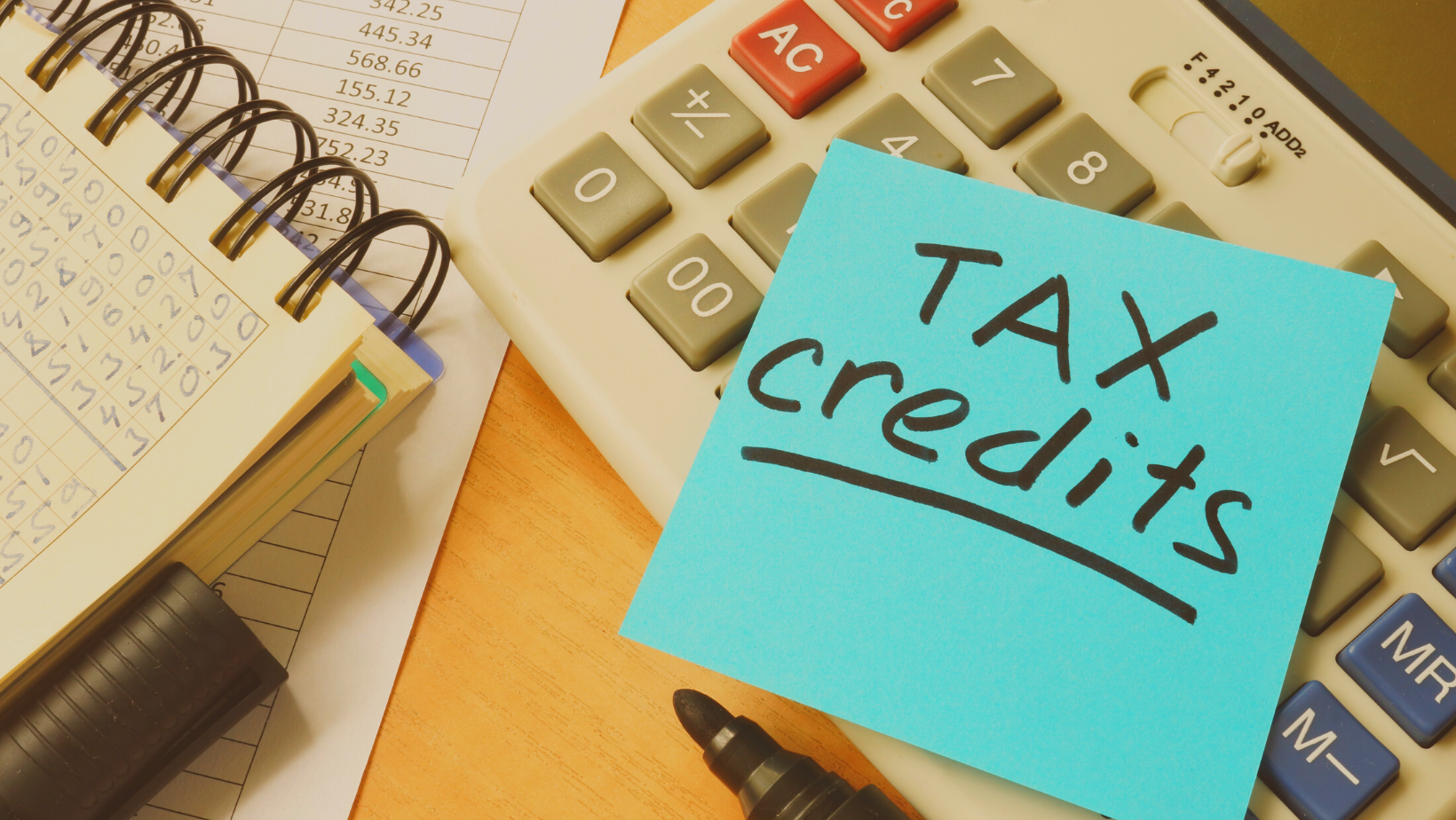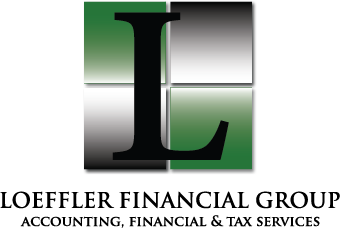Federal, state, and local tax returns are due! Those who can’t pay should still file on time.
The filing and payment deadline for most 2020 federal tax returns is here. Taxpayers should file or request an extension of time to file and pay any taxes they owe by the May 17 deadline to avoid penalties and interest.
Here are some tips for taxpayers who owe tax, but who can’t immediately pay their tax bill.
Taxpayers should:
- File their tax return or request an extension of time to file by the May 17 deadline.
- People who owe tax and do not file their return on time or request an extension may face a failure-to-file penalty.
- Taxpayers should remember that an extension of time to file is not an extension of time to pay.
- An extension gives taxpayers until October 15, 2021 to file their 2020 tax return, but taxes owed are still due May 17, 2021.
- Pay as much as possible by the May 17 due date.
- Whether filing a return or requesting an extension, taxpayers must pay their tax bill in full by the May filing deadline to avoid penalties and interest.
- People who do not pay their taxes on time will face a failure-to-pay penalty.
- Set up a payment plan as soon as possible.
- Taxpayers who owe but cannot pay in full by the deadline don’t have to wait for a tax bill to request a payment plan.
- They can apply for a payment plan on IRS.gov.
Taxpayers can also submit a payment plan request in writing using Form 9465, Installment Agreement Request.
Need help filing an extension? No problem. Our team of tax accountants can file your extension, help set you up with a payment plan, and help with any other tax questions you may have. We’re here even after the tax deadline. Call us today, 717-393-7366!

Tax credits are one of the most powerful ways to lower your income taxes. A tax credit reduces your tax bill dollar for dollar. A tax deduction, on the other hand, only reduces your taxable income, so your benefit is determined by your tax bracket.
For example, a tax deduction of $1,000 will lower your tax bill by $320 if you are in the 32% tax bracket. A $1,000 tax credit will lower your tax bill by $1,000.
Here are some of the most common tax credits; most are subject to income limits.
- Child credit. Taxpayers who have dependent children under age 17 may be eligible for a child tax credit of $2,000 per child.
- Dependent care credit. Expenses paid for the care of dependent children under 13 and certain other dependents may qualify for a tax credit.
- Education credits. Qualified college and vocational school expenses for eligible students may qualify for a credit. Under the American Opportunity Tax Credit, up to $2,500 per student can be claimed for tuition and fees paid during four years of post-secondary education. Under the Lifetime Learning Credit, up to $2,000 per family is available for post-secondary education expenses and for education expenses to acquire or improve job skills.
- Earned income credit. This credit is intended for low-income taxpayers. The size of the credit depends on the amount of your earned income (wages and self-employment income), investment income, and your filing status. Qualifying children can increase the credit.
- Business credits. There are a number of credits available to businesses. They include the research credit the work opportunity credit, the disabled access credit, and the low-income housing credit.
Don’t overlook valuable credits that could reduce your taxes. For details on the credits for which you might qualify, call Loeffler Financial Group today at 717.393.7366 for a review of your situation.

The Internal Revenue Service, the U.S. Department of the Treasury and the Bureau of the Fiscal Service announced they are disbursing approximately 37 million payments in the second batch of Economic Impact Payments from the American Rescue Plan. This brings the total disbursed payments from the American Rescue Plan to approximately 127 million payments worth approximately $325 billion.
As announced on March 12, Economic Impact Payments will continue to roll out in batches to millions of Americans in the coming weeks.
The second batch of payments includes direct deposits, as well as paper checks and debit cards being sent through the mail. Here is additional information on the second batch of payments:
- Like the first batch of payments, the payments announced today primarily were sent to eligible taxpayers who filed 2019 or 2020 returns. People who don’t typically file a return but who successfully used the Non-Filers tool on IRS.gov last year were sent payments in this batch.
- In total, this second batch includes approximately 37 million payments, with a total value of nearly $83 billion.
- As part of that, this batch of payments includes approximately 17 million direct deposit payments, with a total value of more than $38 billion. These payments began processing on Friday, March 19, and some Americans saw the direct deposit payments as pending or as provisional payments in their accounts before today’s official payment date.
- In addition, this batch of payments includes nearly 15 million paper checks (with a total value of nearly $34 billion) and approximately 5 million prepaid debit cards (with a total value of around $11 billion).
- Paper checks and debit cards – known as EIP cards –began processing on Friday, March 19, and will continue to be sent by mail over the next few weeks.
As announced last week, the first batch of payments was mostly sent by direct deposit. Here is additional information on the first batch of payments:
- The first batch of payments began processing on Friday, March 12, and some Americans saw the direct deposit payments as pending or as provisional payments in their accounts before the official payment date of March 17.
- The first batch of payments primarily was sent to eligible taxpayers who provided direct deposit information on their 2019 or 2020 returns, including people who don’t typically file a return but who successfully used the Non-Filers tool on IRS.gov last year.
- In total, the first batch included approximately 90 million payments, with a total value of more than $242 billion.
- The use of direct deposit to issue these payments means that they were disbursed remarkably faster than would otherwise be possible.
- While most payments were disbursed by direct deposit, Treasury mailed roughly 150,000 checks worth approximately $442 million.
Additional batches of payments will be sent in the coming weeks as direct deposits and through the mail as paper checks or debit cards. The vast majority of all Economic Impact Payments will be issued by direct deposit. No action is needed by most taxpayers.
Many federal beneficiaries who filed 2019 or 2020 returns or used the Non-Filers tool were included in these first two batches of payments, if eligible. For federal beneficiaries who did not file a 2019 or 2020 tax return or did not use the Non-Filers tool, the IRS is working directly with the Social Security Administration, the Railroad Retirement Board, and the Veterans Administration to obtain updated 2021 information to ensure that as many people as possible are sent fast, automatic payments. More information about when these payments will be made will be provided on IRS. gov as soon as it becomes available.
Individuals can check the “Get My Payment” tool on IRS.gov to see the payment status of these payments.
Learn more about the third round of the Stimulus payment and see who is eligible for the Economic Impact Payment check out our blog post here.
Need to still schedule a tax appointment? Book online, or call Loeffler Financial Group today at 717-393-7366.

Frequent tax law changes have made the tax code very complicated; only the informed taxpayer can take advantage of tax-cutting opportunities that remain.
Here are some suggestions you should consider if you’re interested in cutting your taxes.
1. Reduce your consumer debt. The interest you pay on consumer debt is not deductible. Consider shifting consumer debt to a home-equity loan (where available and not to exceed $100,000) to maintain deductibility for the interest. Don’t rush into anything, however. Consider loan origination costs and points you may have to pay. Also, realize that if you can’t make the payments on the home-equity loan, you could lose your house.
2. Rehabilitate an old building. One tax break that may be attractive to you is the credit for rehabilitating old buildings – either commercial or certified historic structures. If you don’t want to do the work yourself, consider investing in partnerships that rehabilitate old structures.
3. Watch for AMT liability. The alternative minimum tax (AMT) is the one you pay when too many tax preference items reduce your regular tax below a certain amount. If you use preference items to reduce your taxes – such as accelerated depreciation, private activity bond interest, etc. – you may want to shift income and deductions to keep the alternative minimum tax from applying to you.
4. Time any change in marital status with a view to minimizing taxes. Among the areas that could be affected are deductibility of IRA contributions, lost itemized deductions, and a shift to a different tax bracket. You might be able to cut your tax bill by delaying or accelerating a marriage or divorce.
5. Contribute to a retirement plan. Retirement plans are still an excellent tax shelter. Consider a a retirement account strategy to reduce your self-employed income, even part-time or in a second business. If you’re an employee, find out if your company has a 401(k) or other plan and make contributions to it. If you qualify, you should also consider an IRA.
6. Use your vacation home wisely. If you own a second or vacation home, find out whether you get a better tax break by treating the property as a second residence or as a rental property. The number of days you personally use the home is crucial, so get details immediately.
7. Avoid the “kiddie” tax. Check the income of any children under the age of 19 (24 for full-time students). Unearned income beyond a certain amount will be taxed at your highest rate. Shifting investments or making other adjustments may be appropriate.
8. Make your hobby a business. If you’re making money from a hobby, turn your hobby into a business so that you can write off your expenses. You must be able to demonstrate that you engaged in the activity for a profit. To do that, conduct the activity as a business. Keep records, and get a separate bank account for the activity. The IRS will expect your sideline business to show a profit in three out of five years, or you’ll have to prove your profit motivation in order to deduct losses.
9. Don’t overlook medical deductions. If you help to support an elderly relative who lives in a nursing home for medical reasons, the cost of the nursing home may qualify for the medical deduction. If you make improvements to your home for medical reasons, the cost of such improvements are medical expenses to the extent the improvements do not increase the value of your home. That includes such things as widening doorways for wheelchair use or modifying the home to accommodate an individual with a medical problem.
10. Take the child care credit if you qualify. If you pay for child care services while you work or go to school, you may qualify for the child care credit. The credit is allowed only for children under the age of 13. You must report on your tax return the name, address, and taxpayer identification number of the care provider.
There are other tax-cutting strategies in addition to those mentioned here. If you would like assistance in selecting tax-saving strategies that make the most sense in your situation, please call Loeffler Financial Group at 717-393-7366 and we can assist with any questions or concerns you may have!

![]()
 It’s that time of year again. TAX SEASON.
It’s that time of year again. TAX SEASON.
Loeffler Financial Group is celebrating their 20th Tax Season this year! That’s right 20 years! What first started out in Craig Loeffler’s living room, has now become a successful full service accounting, wealth management and tax preparation!
TAX PREPARER.
Many individuals and small businesses question if they should do their own taxes or seek a tax accountant. You can certainly do your own taxes, however, 2020 brought a lot of change, and experts said a preparer is the way to go.
If someone, for example, got laid off, and they went and started their own business, there are deductions they may not be aware of. Software is good, but you have to know what to put in and where to put things.
Loeffler Financial has experienced tax preparers that take continual education courses to stay up-to-date with the latest tax laws and changes.
TAXES DURING A PANDEMIC.
2020 was a challenging year with the COVID-19 pandemic. Our firm keeps it easy and simple to file your taxes on time, YOUR way. We offer in person appointments, virtual zoom appointments, and our streamlined drop-off services that we have offered for numerous years! We have proper safety protocol to keep our clients, and staff as healthy and safe as possible. We sanitize and wipe down in between each tax appointment. We also provide glass shields and work at a 50% capacity which includes staff and clients in the building.
TAXPAYER CHECKLISTS AND FORM DOCUMENTS.
To help make things easier for you this tax season we have provided our Taxpayer Checklist, along with our Engagement Letter, so you can easily download these forms and fill them out before your scheduled appointment, and/or before you drop off your tax files. This also helps to make sure you have included all necessary documents to keep your tax return moving without any delays!
RENTAL PROPERTIES AND/OR SMALL BUSINESS TAX DOCUMENTS.
Have rental properties or small businesses? Those forms are included below for you as well!
WORK SMARTER, NOT HARDER.
This tax season we have you ready and prepared to make your tax filing smooth and easy!


Tax season is about to begin across the country. If you’re like us, you probably never want to think about 2020 again, however you do need to file your 2020 taxes.
Thanks to the coronavirus, a lot has changed for the 2021 tax season. That’s why you need to start thinking about your tax situation
Loeffler Financial Group recommends scheduling an appointment with a tax professional to ensure taxes are accurate, especially with some people having major income changes due to unemployment, and pandemic relief programs and tax credits, including additional allowances for charitable donations and the Recovery Rebate Credit.
First, here are the main things you need to know right off the bat for the 2021 tax season:
- Tax Day is Thursday, April 15, 2021. You must file your 2020 tax returns by this date!
- The standard deduction for 2020 increased to $12,400 for single filers and $24,800 for married couples filing jointly.
- Income tax brackets increased in 2020 to account for inflation.
Tax Deductions and Credits to Consider for Tax Season 2021
When it comes to filing taxes there are 2 things to pay attention to: deductions and credits. Both help you keep more money in your pocket in different ways!
Tax deductions help lower how much of your income is subject to federal income taxes while tax credits lower your actual tax bill dollar for dollar.
Here are some deductions and credits you might be able to claim on your 2020 tax return:
Charitable Deductions
NEW this tax filing year, taxpayers who don’t itemize deductions may take a charitable deduction of up to $300 for cash contributions made in 2020 to qualifying organizations.
Medical Deductions
If you spent a lot of time in the hospital or have large medical bills, you might be able to find at least some tax relief.
You can deduct any medical expenses above 7.5% of your adjusted gross income (AGI), which is your total income minus other deductions you have already taken.
Business Deductions
If you’re self-employed, there are a bunch of deductions you can claim on your tax return—including travel expenses and the home office deduction if you use a part of your home to conduct business.
TAKE NOTE: If you’re one of the millions of workers who were sent home to work remotely through the pandemic, you won’t be able to claim the home office deduction since it’s reserved for self-employed individuals only.
Earned Income Tax Credit
The EITC is a refundable credit designed to help out lower-income workers. Depending on your income, your filing status and how many children you have, the credit could save you anywhere from a few hundred to a few thousand dollars on your taxes.
Child Tax Credit
Families can claim up to $2,000 per qualified child with this tax credit (the income limits for this credit are $200,000 for single parents and $400,000 for married couples).
You should work with a tax advisor who can make sure you’re not leaving any deductions or credits on the table. Depending on your situation there are other tax deductions and tax credits to take!

The Coronavirus and Your Taxes
Here are some things to keep in mind when you file your 2020 taxes:
Stimulus Checks
As part of the Coronavirus Aid, Relief, and Economic Security (CARES) Act’s $2 trillion relief package, the government sent out a stimulus check to millions of Americans.
This stimulus check will not count as taxable income. Instead, it’s being treated like a refundable tax credit for 2020. In layman’s terms, the stimulus check is like an advance on money you would have received as part of your tax refund in 2021.
Paycheck Protection Program (PPP) Loans
The CARES Act also tried to help struggling small business owners stay afloat by offering them Paycheck Protection Program (PPP) loans. As long as these loans were used on certain business expenses—payroll, rent or interest on mortgage payments, and utilities, to name a few—these loans were designed to be “forgiven.”
Unemployment Benefits
Many Americans found themselves out of work after the pandemic shut down turning to unemployment for assistance. Those who received unemployment benefits will need to pay income taxes on that money.
Retirement Plans: 401(k)s, IRAs and More
There were a lot of changes to retirement plans in 2020—and some of those changes could impact your tax bill this year. Let’s tackle each of those major changes:
- The CARES Act allows folks under age 59 and 1/2 to take up to $100,000 out of their 401(k)s and IRAs up until the end of 2020 without having to pay an early withdrawal penalty.
- Taking money out of your retirement accounts before retirement is a terrible idea—penalty or not.
- The money you take out of tax-deferred retirement accounts like a traditional 401(k) or IRA will be taxed as ordinary income.
- If you own a traditional IRA, you have to take money out of your account once you reach a certain age. Those withdrawals are called required minimum distributions (RMDs).
- The SECURE Act pushed back the age for RMDs from traditional IRAs from 70 and 1/2 to 72 (if your 70th birthday was July 1, 2019 or later).
- The CARES Act allows seniors to skip RMDs altogether in 2020 without penalty. This could lead to significant tax savings for retirees with those accounts since the money that’s taken out of a traditional IRA counts as taxable income.
- The SECURE Act also allows owners of traditional IRAs to keep putting money in their accounts past age 70 and 1/2 starting in 2020. Since the money you put into a traditional IRA is tax deductible, you could lower how much of your income is taxed this year.
One last thing—It’s probably a good idea to reach out to a tax advisor who can assist you and review all the new tax laws and changes for the upcoming tax season.
With the coronavirus still spiking, Loeffler Financial Group will continue their virtual tax appointments and consultations, along with their easy and stream-lined drop off tax services. Book your virtual appointment today, or call us to learn more about our drop off program.


